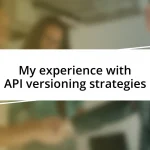Key takeaways:
- GraphQL’s flexibility allows clients to request specific data, reducing the issues of over-fetching and under-fetching usually faced with REST.
- Understanding project requirements through user feedback can shape effective implementations and prioritize essential data over nice-to-have features.
- Integrating GraphQL with existing systems requires careful planning, testing, and incrementally transitioning to maintain functionality while leveraging new capabilities.
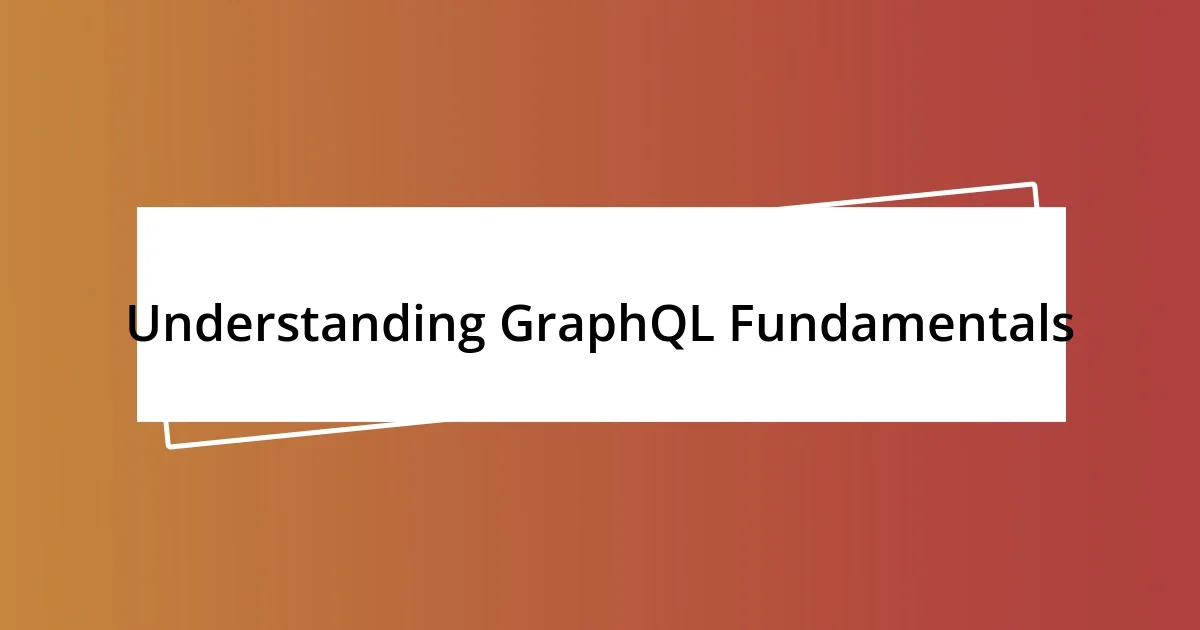
Understanding GraphQL Fundamentals
When I first encountered GraphQL, it felt like unlocking a treasure chest of possibilities. Unlike REST, where the server dictates the data structure, GraphQL enables clients to request specifically what they need, minimizing over-fetching and under-fetching. This flexibility is a game-changer, especially when you’re dealing with complex data structures.
I remember diving into the Schema Definition Language (SDL) and feeling a bit overwhelmed at first. The idea of defining types, queries, and mutations all in one place seemed daunting. However, once I grasped how SDL acts as a contract between the client and server, I began to appreciate the clarity it brings to data interactions. Have you ever felt that thrilling moment when something complex finally clicks into place? That’s exactly what I felt when it all came together!
As I developed with GraphQL, I realized that its introspective nature made exploring APIs so much easier. The ability to query the schema itself means you can discover capabilities without sifting through lengthy documentation. It’s almost like having a conversation with your API; have you ever wished your tools talked back to you in a way you could easily understand? With GraphQL, they do, and it changes how you approach API integration!
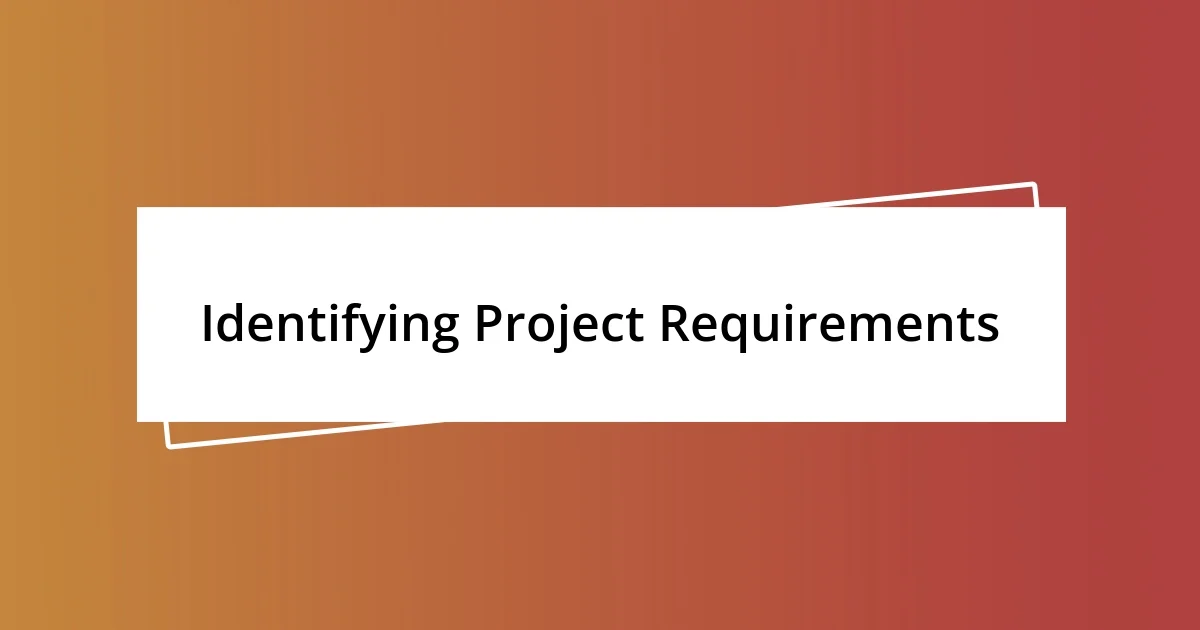
Identifying Project Requirements
Identifying the requirements of a project is a crucial first step in implementing GraphQL effectively. Early on in my journey, I found that understanding what the client truly needed made all the difference. There were moments when stakeholders would present vague ideas, and I quickly learned to ask probing questions to clarify their vision. Have you ever had that feeling of uncertainty when faced with a list of features? Digging deeper helped me transform those uncertainties into solid, actionable requirements.
A pivotal aspect of identifying project requirements is distinguishing between essential data and nice-to-have features. In one of my early projects, I remember discussions that revolved around whether to include support for real-time data updates. While it sounded appealing, I had to weigh the necessity against the project’s timeline and resource constraints. By prioritizing requirements, I discovered that focusing on core functionalities not only simplified our implementation but also set us up for a smoother development process.
Understanding user needs is equally important. For instance, I conducted user interviews to gather insights on how they interacted with existing systems. The feedback was eye-opening; they wanted more control over the data they accessed. This realization led me to emphasize GraphQL’s query language capabilities, allowing users to tailor their data requests effectively. Have you experienced those enlightening moments when user feedback reshapes your project’s direction? That’s the power of listening to the end user as you identify requirements.
| Project Aspect | Traditional REST | GraphQL |
|---|---|---|
| Data Fetching | Multiple endpoints required; leads to over-fetching and under-fetching | Single endpoint; clients request exactly what they need |
| Flexibility | Rigid structure; changes require server-side adjustments | Highly flexible; evolves with client needs without server changes |
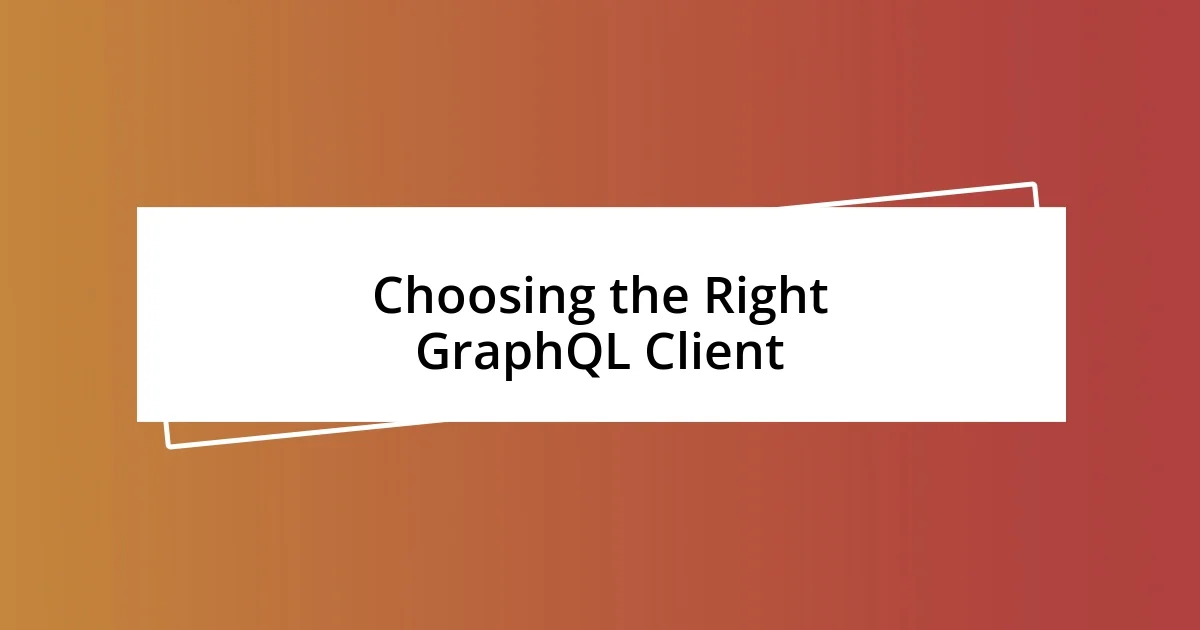
Choosing the Right GraphQL Client
Choosing the right GraphQL client can significantly influence your development experience and project outcomes. Based on my journey, I learned that it’s crucial to evaluate the features and ecosystem surrounding each client. Initially, I was drawn to Apollo Client because of its robust caching capabilities and an extensive set of tools, but I also took the time to explore alternatives like Relay and Urql. Have you ever found that the right tools can make all the difference in how smoothly your projects unfold? Emphasizing the right fit from the start can save countless hours down the line.
When selecting a GraphQL client, here are some important factors to consider:
- Ease of Use: Look for a client with a gentle learning curve, especially if your team is new to GraphQL.
- Documentation and Community Support: A well-documented library can get you up to speed quickly; community forums and examples are invaluable resources.
- Integration Capabilities: Ensure it fits seamlessly with your existing tech stack and is adaptable to your needs.
- Caching Mechanisms: Effective caching can enhance performance by reducing the number of network requests, leading to a smoother user experience.
- Development Tools: A client that offers advanced tools for debugging and monitoring can make your life much easier during development.
I remember the relief I felt when I chose a client that not only aligned with my technical needs but also supported my team’s growth and understanding of GraphQL. Reaching that point made moving forward with the project so much more enjoyable!

Integrating GraphQL with Existing Systems
Integrating GraphQL with existing systems can feel overwhelming at first, especially when balancing legacy architecture with modern requirements. I recall a project where we had to merge a traditional REST API with a new GraphQL layer. It was a delicate dance of maintaining existing functionality while introducing new features. Have you ever faced the challenge of making old systems talk to new ones? I found that careful planning and incremental implementation allowed us to leverage GraphQL’s strengths without disrupting service.
One key strategy I employed involved creating a transitional bridge between the existing REST controllers and the new GraphQL resolvers. This setup allowed us to expose existing endpoints while gradually replacing them with optimized queries. The moment we demonstrated how effortlessly clients could fetch tailored data from our new GraphQL API, I could see the lightbulbs go off in their eyes. The excitement of building something that everyone could visualize and engage with was a significant motivator for our team.
As your team moves towards integration, don’t underestimate the value of extensive testing. In one instance, while integrating GraphQL with a particularly complex system, we uncovered data inconsistencies that could have derailed us later. I remember the moment we celebrated when our unit tests revealed issues early on. It reinforced the importance of vigilance and thoroughness. Have you taken the time to ensure your integration is as seamless as possible? A proactive approach can save you from bigger headaches later down the road, making your integration journey not just smoother but also incredibly rewarding.
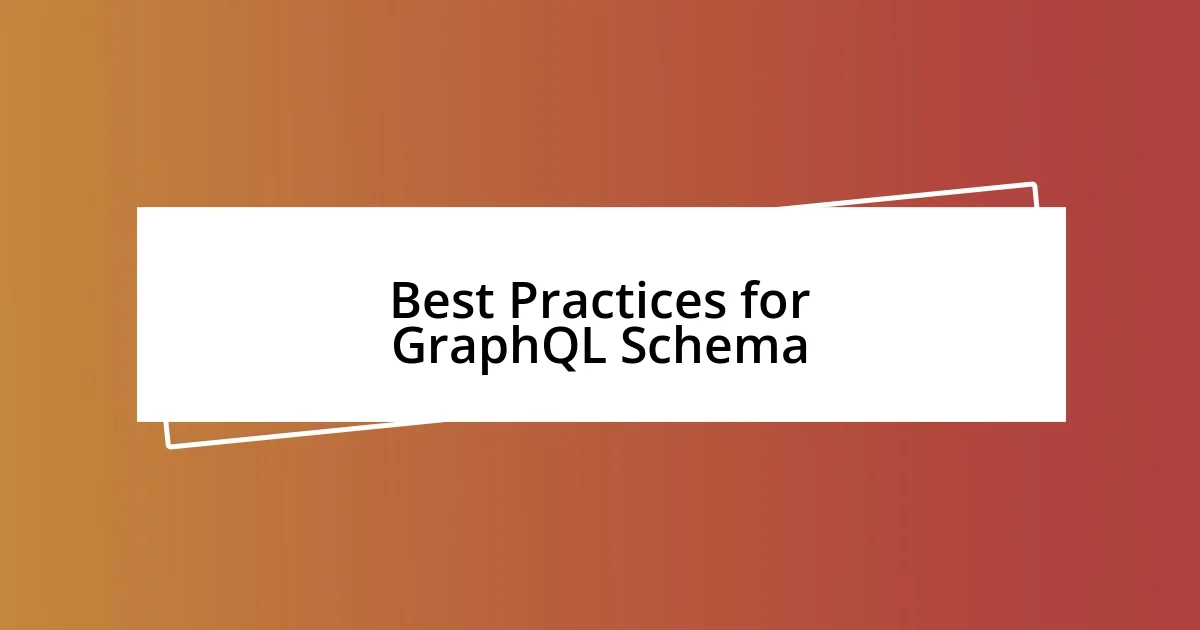
Best Practices for GraphQL Schema
When it comes to designing your GraphQL schema, one of the most valuable practices is to think carefully about how you structure your types and fields. In my experience, using descriptive names is vital—names should reflect the purpose and content of the data. I remember when I created a confusingly named type that ended up causing headaches later on. I couldn’t help but ask myself, “Was it really worth the short and snappy name if no one understood it?” Clear naming conventions not only improve readability but also make onboarding new team members a breeze.
Another best practice is to embrace the power of composition. Introducing modular types can significantly enhance your schema’s clarity and reusability. I found that breaking down complex types into smaller, focused components made it easier to manage changes. During one of my projects, I had a nested structure that turned into a tangled web of types—updating it felt like navigating a maze! By restructuring into composable parts, I gained the flexibility I needed to adapt quickly. Have you considered how a well-organized schema could simplify your collaboration with teammates?
Lastly, prioritize building a strong relationships between your types through proper connections or “relationships” using GraphQL’s powerful reference capabilities. In my journey, I’ve seen how illustrating these links can paint a clearer picture of the data landscape. For instance, when I represented user relationships in a social media app, it clarified how data interacted and allowed for more intuitive queries. Have you experienced this sense of clarity in your projects? Creating these relationships not only enhances performance but also helps maintain an organized structure that scales as your application grows.
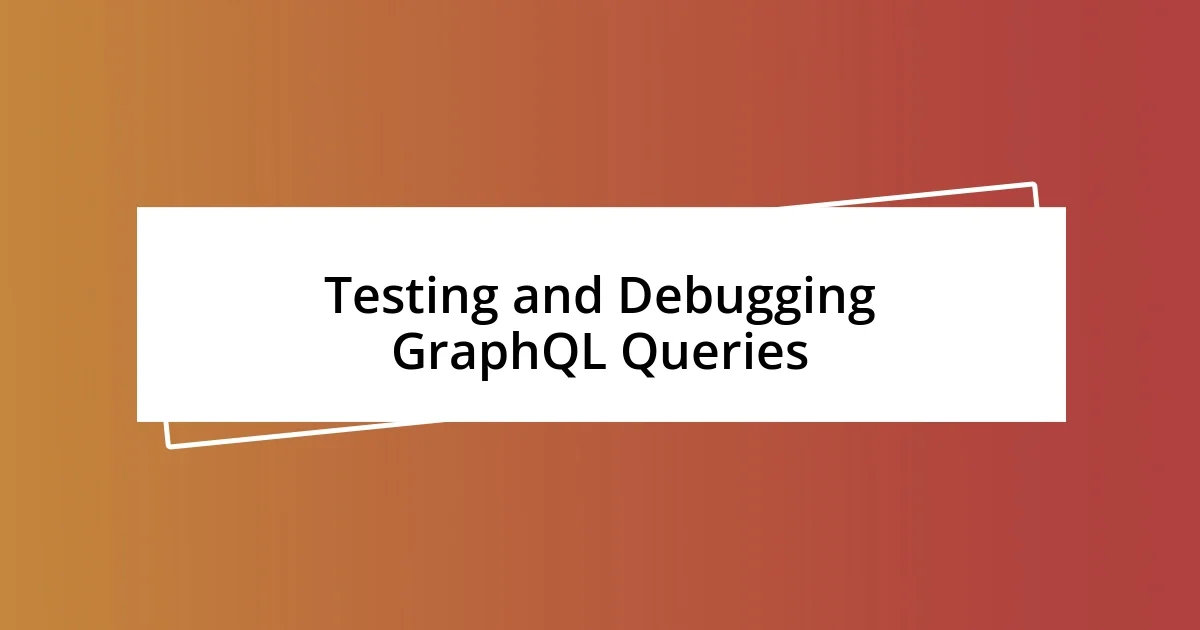
Testing and Debugging GraphQL Queries
Testing GraphQL queries is crucial for ensuring your implementations run smoothly. I still remember a moment when I ran my initial tests and was stunned to find discrepancies between expected outputs and what’s returned. It was a turning point for me because it underscored how even minor tweaks in fields can lead to unexpected results. Have you ever experienced the same confusion when testing your queries?
Utilizing tools like GraphiQL made debugging significantly easier for me. I loved how this interactive environment allowed me to build and run queries in real time, giving instant feedback. There were times I felt stuck, but just one careful inspection of the response structure, types, or error messages would often shine a light on the issue. It’s like piecing together a puzzle before the big reveal—seeing those pieces click into place is incredibly satisfying.
In my journey, I found that writing end-to-end tests for critical queries paid off immensely. I recall the relief I felt when automated tests flagged issues that could have slipped through during manual testing. It made me realize that being proactive could mean the difference between a smooth deployment and a post-launch frenzy. How often do you reflect on your testing strategies? Integrating robust testing processes not only improves reliability but also builds confidence in your work.
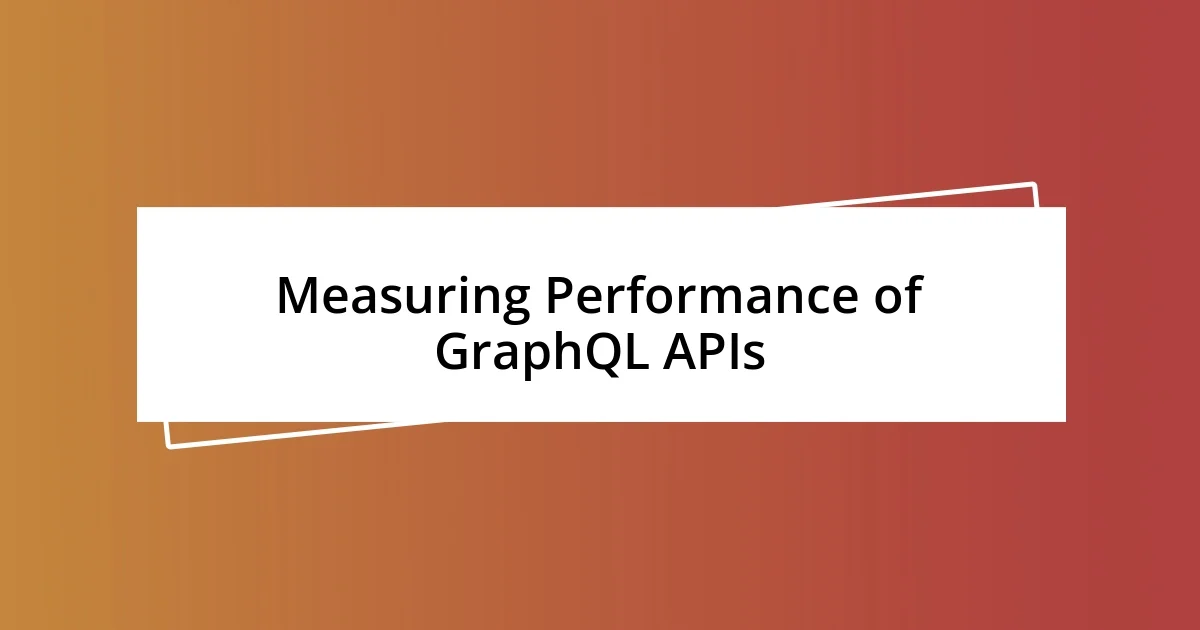
Measuring Performance of GraphQL APIs
Measuring the performance of GraphQL APIs can feel daunting at first, but I’ve learned that focusing on key metrics helps demystify the process. One valuable approach I took was monitoring query response times. Initially, I didn’t pay much attention and was shocked when, during a performance review, a colleague discovered our queries were taking over two seconds to resolve in a production environment. It’s amazing how much a simple metric can reveal about the efficiency of your implementation.
Another aspect I found essential is tracking the complexity of queries. Implementing a depth-limiting strategy allowed me to define maximum query depths for incoming requests. I remember the wave of relief I felt when I noticed a significant drop in the number of overly complex queries that were crashing our server. Have you explored how setting limits on query complexity can enhance both performance and security? I can assure you, it’s a game changer.
Lastly, I highly recommend using tracing tools to gain insights into resolver performance. Integrating tools like Apollo Tracing illuminated which resolvers took the longest and allowed me to identify bottlenecks effectively. I distinctly remember the moment we optimized a slow resolver that was impacting our users’ experience all along. Have you ever had that ‘aha’ moment when you finally see the root cause of an issue? It’s incredibly gratifying and reinforces the importance of a thorough performance analysis for your GraphQL APIs.














